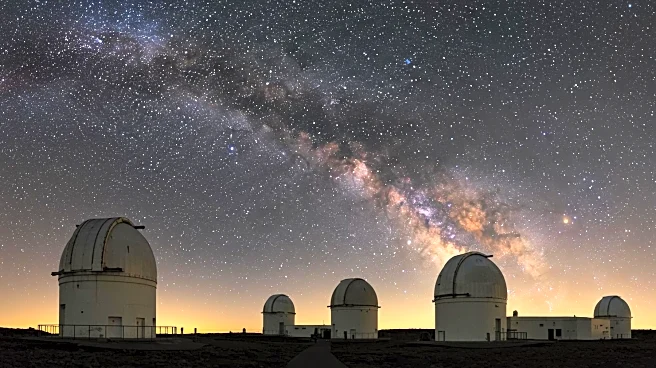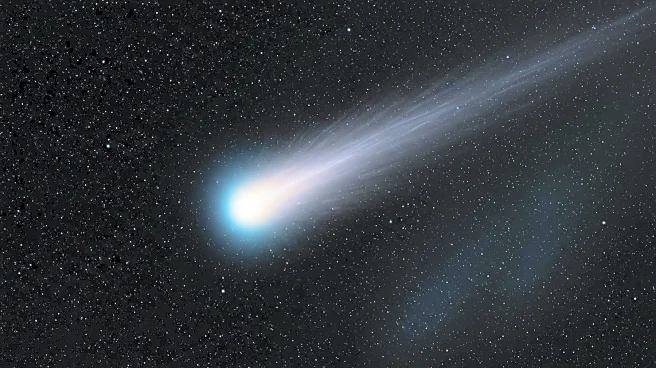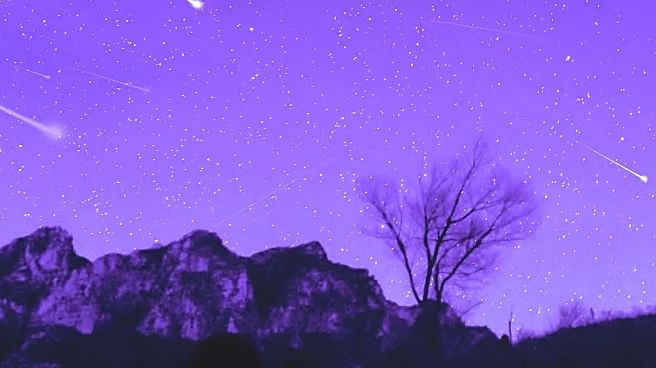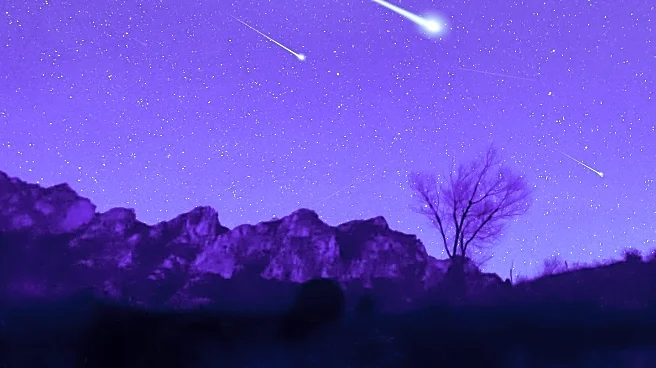Rapid Read • 8 min read
Astronomers have captured the first optical evidence of a stellar bridge in the Abell 3667 galaxy cluster, located approximately 700 million light-years from Earth. This discovery, published in The Astrophysical Journal, reveals a dramatic cosmic merger between two galaxy clusters, each with its own brightest cluster galaxy (BCG). The bridge of stars stretches between the lenticular galaxy IC 4965 and the jellyfish galaxy JO171, as they engage in a violent gravitational interaction. The images were captured using the Dark Energy Camera on the Víctor M. Blanco Telescope in Chile, and the discovery was led by Anthony Englert of Brown University. The stellar bridge was detected after compiling over a decade's worth of telescope observations, providing one of the deepest optical views of the cluster.
AD
The discovery of the stellar bridge in Abell 3667 is significant as it offers a new method to map dark matter, which constitutes about 80 percent of the universe's mass. The faint glow of intracluster light, which mirrors the distribution of dark matter, provides astronomers with an indirect way to visualize this invisible substance. Understanding the movement and interaction of dark matter during massive cosmic collisions can help scientists unravel the evolution of cosmic structures. This breakthrough highlights the potential of future observations, such as those from the Vera C. Rubin Observatory, which will further expand the study of intracluster light and dark matter mapping.
The upcoming Vera C. Rubin Observatory is expected to revolutionize the study of intracluster light and dark matter. Scheduled to begin operations later this year or in early 2026, the observatory will conduct the Legacy Survey of Space and Time (LSST), mapping the southern sky in unprecedented detail over a decade. With a telescope twice the size of the Blanco and the largest digital camera ever built, the Rubin Observatory is anticipated to uncover hundreds of similar structures, significantly advancing the understanding of cosmic mergers and dark matter distribution.
The discovery of the stellar bridge not only provides insights into dark matter but also underscores the collaborative nature of astronomical research. The ability to compile observations from various astronomers over years demonstrates the importance of shared data and resources in achieving significant scientific breakthroughs. Additionally, the study of intracluster light could lead to new methodologies in astrophysics, potentially influencing future research directions and technological advancements in telescope design and data analysis.
AD
More Stories You Might Enjoy











